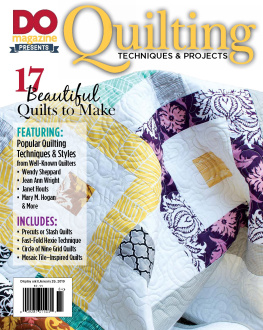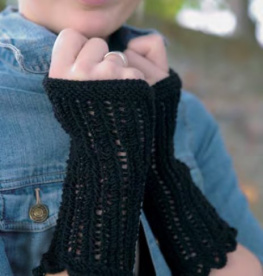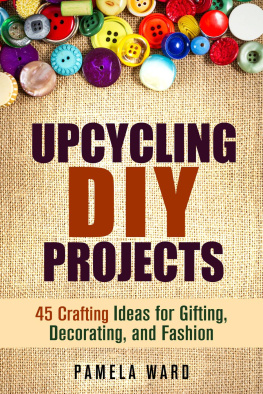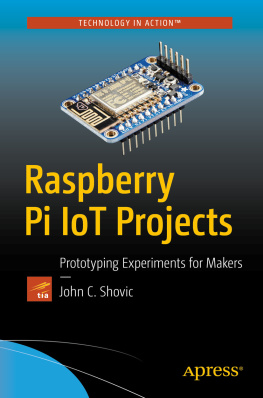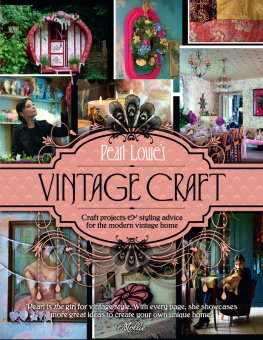Vintage Upcycling
With Raspberry Pi and Arduino
Enrico Miglino
Copyright 2020 Ediciones Baleares
all right reserved
ISBN-978-84-941412-1-8
Vintage Upcycling With Raspberry Pi and Arduino
C opyright Ediciones Baleares 2020
Av.da Miguel Hernndez 44 2/D
03700 Dnia (Alicante) Spain
e-mail edbaleares@g mail.com
All rights reserved. No part of the contents of this book may be reproduced, transmitted in any form or by any means, or translated without the written permission of the publisher.
This book is provided as-is and expresses the authors views and opinions.
The views, opinions, and information expressed in this book, including URL and other Internet website references, are subject to change without notice.
ISBN 978-84-941412-1-8
Editorial Production: Ediciones Baleares
Copyeditor: Furio Piccinini
Proofreader: Maria Antonietta Ricagno
Cover: Furio Piccinini
Photos: Enrico Miglino
Table of Content
Preface
A lot of fun and challenging too
The Shed magazine is predominantly a print magazine and we have been privileged to have published most of the articles here in this publication by Enrico Miglino.
These upcycling projects have been very well received by our readers who enjoy their spare time, making and creating projects for fun or folly. With electronics now playing such a huge, huge part in our everyday lives, so many more of our readers are enjoying projects of this type where they can test their skills and expand their knowledge horizons.
All these projects here do just that and we hope you enjoy them as much as our readers have. To test your skills and have fun doing so is the perfect way to enjoy your leisure time. There is nothing like creating a project that brings on a smile and makes good use of stylish antique pieces while using contemporary, easy to access, hardware and software.
These upcycling projects are a perfect match for the electronics hobbyist and for those that appreciate that many older items still have value, use and a place with us all in the 21st century.
Enjoy.
Greg Vincent , Publishing editor
The Shed magazine
Acknowledgments
If you are reading this book it is also thanks to the support and sponsorship of Project14 and the element14.com community that gave me the possibility and help to create the three part workshop Vintage Upcycling. During the chats with Tariq while preparing the workshop script, I had the idea of writing this book.
A big thanks also to Greg and The Shed magazine where I published some of the projects covered by this work.
The presentation of professional schematics and PCB designs was made possible thanks to the kind sponsorship of Altium Designer, one of the best CAD circuit design applications.
All the 3D printed components shown in these projects were made using filament and resin 3D printers provided by Elegoo.
Introduction
by Tariq Ahmad
Community manager of Project14 at element14.com
When I think of vintage electronics, what I tend to think of the beautiful craftsmanship on my parents old Marentz receiver from the 70s accompanied with floor speakers with room filling sound. Or, maybe a vintage console television with a CRT screen that was 25 inches, which was bulky even by todays standards, even if the screen is smaller than what people are use to. Technology back then was not meant to be tucked away or hidden, it had to be made as beautiful as any piece of furniture in the room. Nowadays, the life cycle for electronics is much shorter, and the footprint it leaves is not so drastic.
When Enrico, approached me about doing a workshop around an old rotary phone, I recalled a rotary phone that I fell in love with at a neighbours house growing up. Bringing back something old and familiar, isnt just a shameless plug for nostalgia, its a return to something beauty lost. For all its sophistication, todays technology has a short life cycle, and an almost disposable quality. This was less the case 40 or 50 years ago, has time flown by so much since then? The upcycling workshop that Enrico proposed, felt almost Proustian, in its search for time regained. Every piece of vintage technology recalled memories from era lost but not forgotten.
The idea for having workshops on the element14 community came from a desire to make electronics projects accessible to everyone. That was one of the missions of the Project14 project competitions held on the element14 community. With Enricos support, we got together to arrange a series of workshops based on projects in this book, that involved upcycling Vintage Electronics.
What is upcycling you might ask? Upcycling, also known as creative reuse of existing material or products perceived to be of great quality or aesthetic value. For electronics hobbyists, that usually means using something like a Raspberry Pi or an Arduino, in order to make something old, new again. The idea for the Vintage Tech Workshop.
The idea for this workshop was to inspire people to take cool vintage appliances and repurpose them using a Raspberry Pi or an Arduino. If you are a fan of electronics, you likely have some older electronics lying around that are in need of a second life. One of the goals of upcycling is to prevent wasting material that could be potentially useful by making use of it. By doing so, you reduce the consumption of new raw materials in effect creating a new product; thus, reducing energy usage, air and water pollution, and even greenhouse gas emissions.
Following the 3 part workshop series on Vintage Upcycling with Raspberry Pi and Arduino that Enrico hosted, the members voted on a Recycle & Retrofit competition in the Project14 program on element14 community. Project14, is a member-driven program on the element14 community where members come up with ideas for competitions, vote on the competitions they want to participate in, and then decide the winners of those competitions. In fact, the first competition ever run on Project14 was Techno Toys, an upcycling competition, and throughout the programs lifespan, many of the most memorable electronics projects, involved upcycling.
Upcycling connects the past to present in a way that honours what we cherish from vintage electronics while improving it to make it contemporary using modern electronics such as a Pi or an Arduino. One of the goals of upcycling is have a more creative version of recycling, not only designing, adapting and making usable something vintage, while adding more value, and a brand-new charm. To upcycle an item, is to essentially update, modernise or deconstruct it. Upcycling is about aesthetics as well as substance. Upcycling can make what you once loved, contemporary while not losing any of its old world charm.
If youre new to electronics projects, or upcycling, we hope this book inspires you to try your hand in electronics project. If youre more experienced, we hope that the projects in this book inspire you to take on an upcycling project and make something beautiful. In this way we can make what is old, new and sustainable at the same time.
Chapter 1
Upcycling a 1970 Desk Lamp
1.1 Introduction
This project first appeared on The Shed magazine issue number 88, January/February 2020 (https://the-shed.nz/)
Repository link: https://github.com/alicemirror/LampUpcycling
This is one of the first upcycling projects I published on The Shed magazine; the selected vintage appliance I decided to revive is a Brionvega desk lamp, an iconic Italian design appliance by the mid-70s. When I bought this lamp, the device got me a special feeling, so I decided to upcycle it trying to make something better, up to date with the contemporary technology, but leaving intact the original stylish sensation.


